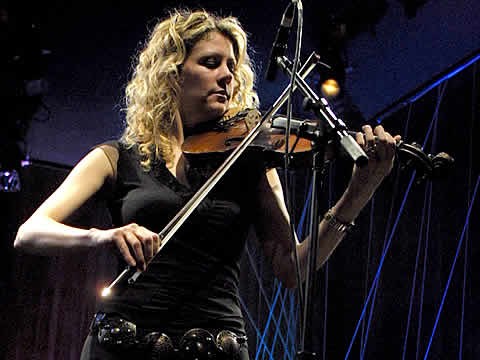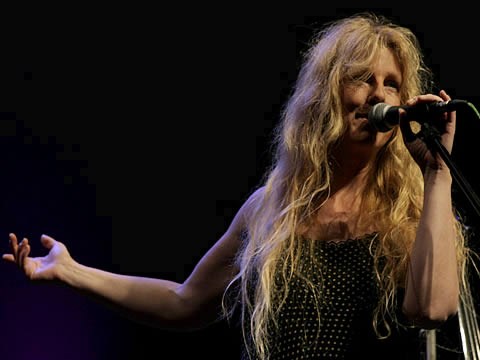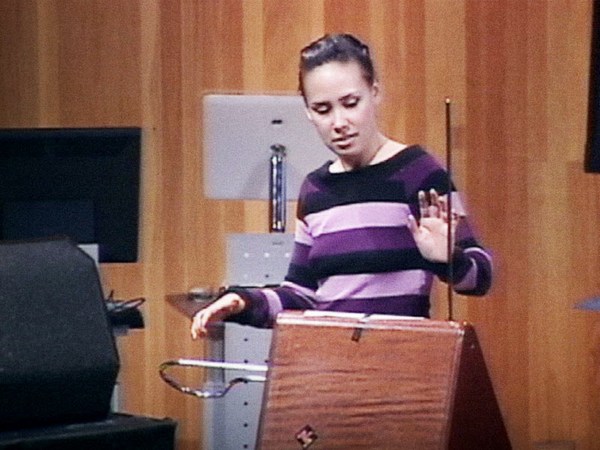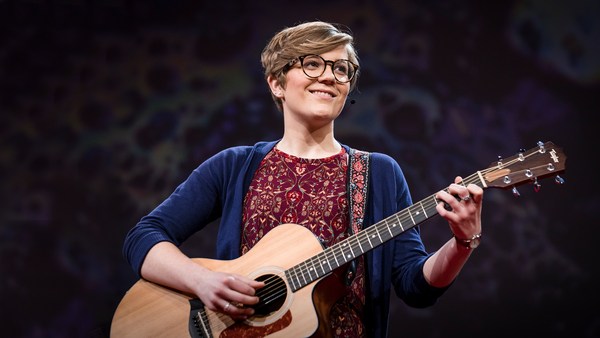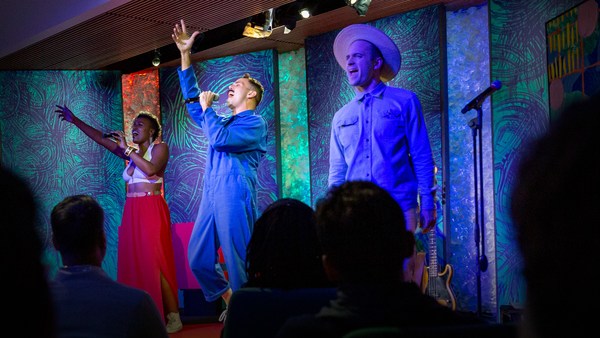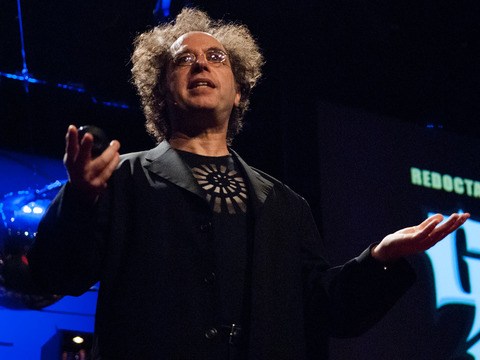Now, since this is TEDGlobal, who can tell me what this is called in French? I see you're all up on the history of hurdy-gurdy -- "vielle à roue." And in Spanish, "zanfona." And in Italian, "ghironda," okay? Hurdy-gurdy, or wheel fiddle.
So, these are the different kinds and shapes of the hurdy-gurdy. The hurdy-gurdy is the only musical instrument that uses a crank to turn a wheel to rub strings, like the bow of a violin, to produce music. It has three different kinds of strings. The first string is the drone string, which plays a continuous sound like the bagpipe. The second string is a melody string, which is played with a wooden keyboard tuned like a piano. And the third string is pretty innovative. It's also the only instrument that uses this kind of technique. It activates what's called the buzzing bridge, or the dog. When I turn the crank and I apply pressure, it makes a sound like a barking dog. So all of this is pretty innovative, if you consider that the hurdy-gurdy appeared about a thousand years ago and it took two people to play it; one to turn the crank, and another person -- yes -- to play the melody by physically pulling up large wooden pegs. Luckily, all of this changed a couple of centuries later. So, one person could actually play and almost -- this is pretty heavy -- carry the hurdy-gurdy.
The hurdy-gurdy has been used, historically, through the centuries in mostly dance music because of the uniqueness of the melody combined with the acoustic boombox here. And today, the hurdy-gurdy is used in all sorts of music -- traditional folk music, dance, contemporary and world music -- in the U.K., in France, in Spain and in Italy. And this kind of hurdy-gurdy takes anywhere from three to five years [to order and receive it]. It's made by specialized luthiers, also in Europe. And it's very difficult to tune.
So without further ado, would you like to hear it?
(Audience: Yes.)
Caroline Phillips: I didn't hear you. Would you like to hear it? (Audience: Yes!)
CP: Okay. There I go. I'd like to sing in Basque, which is the language spoken in the Basque Country where I live, in the region in France and Spain.
(Music)
[Basque]
(Music)
Thank you.
(Applause)
This is a song that I wrote based on traditional Basque rhythms. And this is a song that has a kind of a Celtic feel.
(Music)
Thank you. Thank you.
(Applause)
